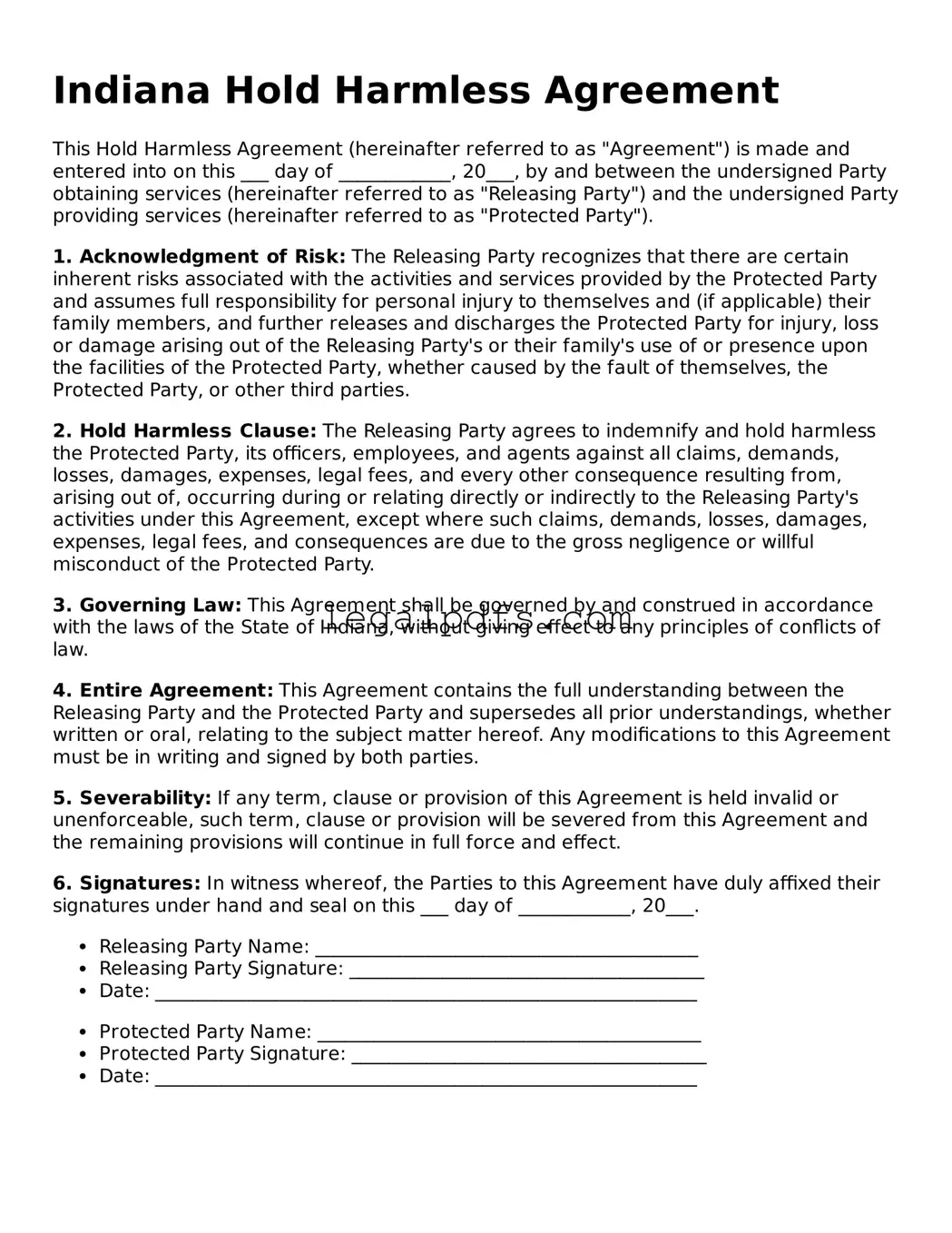Indiana Hold Harmless Agreement
This Hold Harmless Agreement (hereinafter referred to as "Agreement") is made and entered into on this ___ day of ____________, 20___, by and between the undersigned Party obtaining services (hereinafter referred to as "Releasing Party") and the undersigned Party providing services (hereinafter referred to as "Protected Party").
1. Acknowledgment of Risk: The Releasing Party recognizes that there are certain inherent risks associated with the activities and services provided by the Protected Party and assumes full responsibility for personal injury to themselves and (if applicable) their family members, and further releases and discharges the Protected Party for injury, loss or damage arising out of the Releasing Party's or their family's use of or presence upon the facilities of the Protected Party, whether caused by the fault of themselves, the Protected Party, or other third parties.
2. Hold Harmless Clause: The Releasing Party agrees to indemnify and hold harmless the Protected Party, its officers, employees, and agents against all claims, demands, losses, damages, expenses, legal fees, and every other consequence resulting from, arising out of, occurring during or relating directly or indirectly to the Releasing Party's activities under this Agreement, except where such claims, demands, losses, damages, expenses, legal fees, and consequences are due to the gross negligence or willful misconduct of the Protected Party.
3. Governing Law: This Agreement shall be governed by and construed in accordance with the laws of the State of Indiana, without giving effect to any principles of conflicts of law.
4. Entire Agreement: This Agreement contains the full understanding between the Releasing Party and the Protected Party and supersedes all prior understandings, whether written or oral, relating to the subject matter hereof. Any modifications to this Agreement must be in writing and signed by both parties.
5. Severability: If any term, clause or provision of this Agreement is held invalid or unenforceable, such term, clause or provision will be severed from this Agreement and the remaining provisions will continue in full force and effect.
6. Signatures: In witness whereof, the Parties to this Agreement have duly affixed their signatures under hand and seal on this ___ day of ____________, 20___.
- Releasing Party Name: _________________________________________
- Releasing Party Signature: ______________________________________
- Date: __________________________________________________________
- Protected Party Name: _________________________________________
- Protected Party Signature: ______________________________________
- Date: __________________________________________________________
